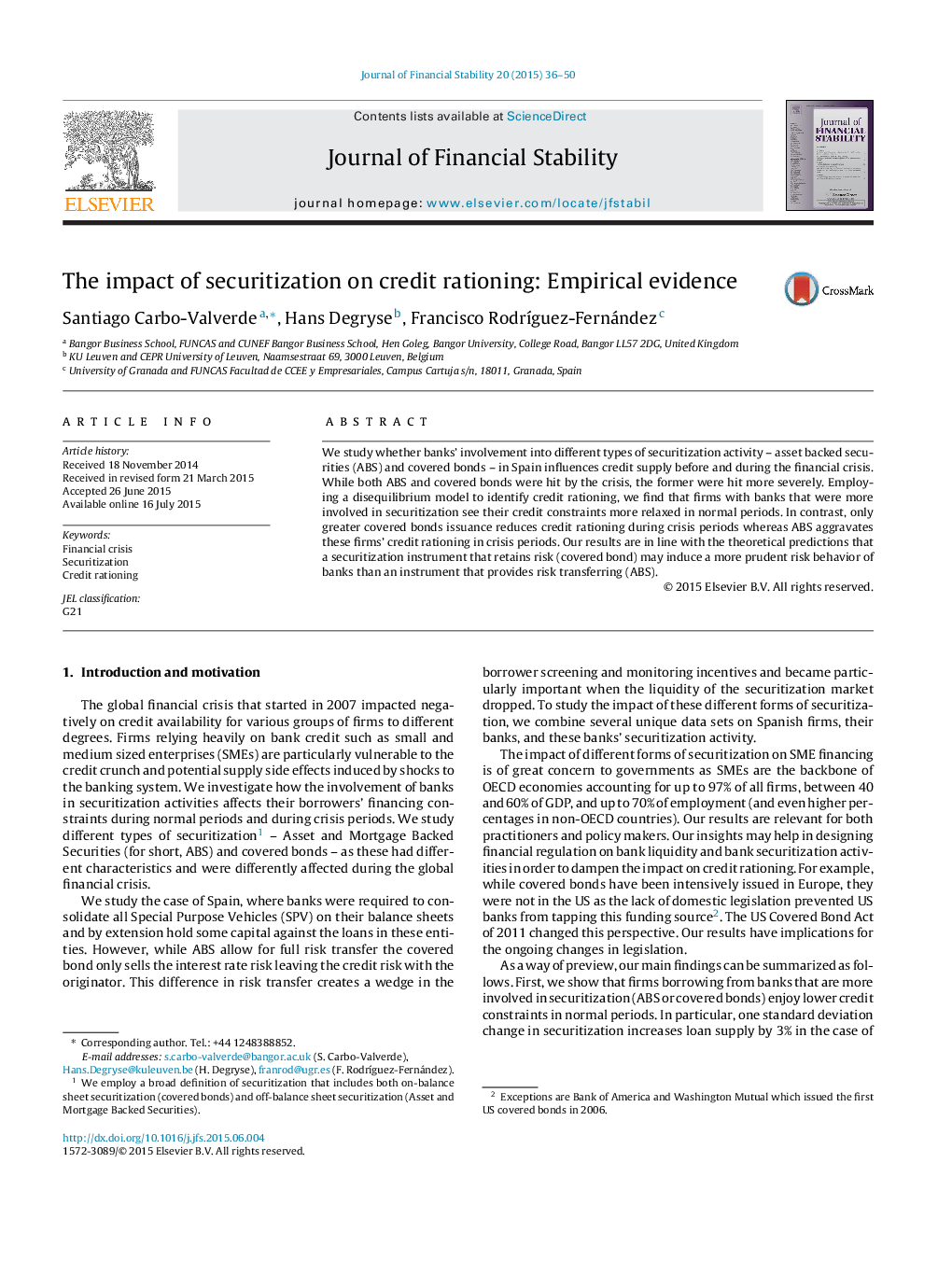| Article ID | Journal | Published Year | Pages | File Type |
|---|---|---|---|---|
| 7409460 | Journal of Financial Stability | 2015 | 15 Pages |
Abstract
We study whether banks' involvement into different types of securitization activity - asset backed securities (ABS) and covered bonds - in Spain influences credit supply before and during the financial crisis. While both ABS and covered bonds were hit by the crisis, the former were hit more severely. Employing a disequilibrium model to identify credit rationing, we find that firms with banks that were more involved in securitization see their credit constraints more relaxed in normal periods. In contrast, only greater covered bonds issuance reduces credit rationing during crisis periods whereas ABS aggravates these firms' credit rationing in crisis periods. Our results are in line with the theoretical predictions that a securitization instrument that retains risk (covered bond) may induce a more prudent risk behavior of banks than an instrument that provides risk transferring (ABS).
Related Topics
Social Sciences and Humanities
Economics, Econometrics and Finance
Economics, Econometrics and Finance (General)
Authors
Santiago Carbo-Valverde, Hans Degryse, Francisco RodrÃguez-Fernández,
